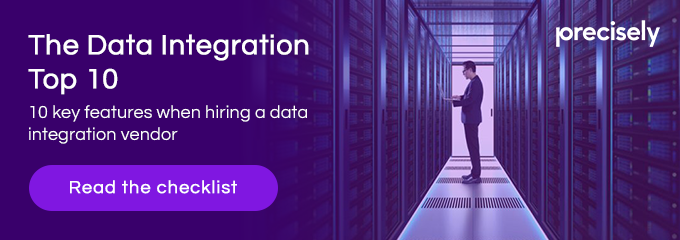
4 Key Reasons to Get Data Integration Right in 2021

The volume of data that is available to companies today is significantly greater than ever before. The velocity of that data, moreover, continues to increase as cloud computing, mobile technologies, and the Internet of things (IoT) gain broader adoption than ever. Smart companies are not simply managing that complexity; they are embracing it as a key enabler of competitive advantage in the 2020s. A sound, holistic approach to data integration and governance is essential if organizations are to unlock the immense value of all that data.
The problem that many organizations face, of course, is that much of their data resides in siloed applications, on mainframes, in ERP or CRM systems, in specialized billing or logistics systems, e-commerce, or even with external vendors.
For companies that are still living with data silos, 2021 is the year to take data integration to the next level. The COVID pandemic has been the catalyst for so many changes, not the least of which are rapidly shifting customer expectations and an intensified focus on winning new customers and retaining existing ones.
As we look ahead to the new year, here are some key factors that compel business leaders toward a renewed focus on big data integration.
1. Data is the new oil
In the coming decade, the companies that develop a competency for integrating, managing, and extracting value from their data will gain a long-term competitive advantage. In the insurance industry, leading companies are using data to refine risk assessment models, resulting in more accurate pricing. Retail organizations are transforming site selection from an art into a science, using location intelligence and mobility data to rapidly zero in on the best locations for new stores. Financial services companies are using data to develop a more complete and accurate understanding of who their customers are and to tailor product and service offers that appeal directly to their needs.
To effectively extract value from an increasingly complex and multi-multifaceted body of information, business leaders must begin with a clear view of their data assets and the silos that contain them. They must take proactive steps to break down those silos with enterprise integration.
2. Garbage in yields garbage out
We are all familiar with the old saying, “garbage in, garbage out,” but in the rush to extract value from big data, there is the potential to feed downstream systems with that poor data quality. Information can degrade over time, as individual customers change their addresses, names, or other key attributes. Commercial entities, likewise, often merge or go out of business. Data quality can suffer as a result of human error, changes to what is being measured (and how it is measured), or simply from data corruption or loss.
As businesses aim to incorporate artificial intelligence and machine learning into a broad range of business processes, the importance of breaking down data silos is greater than ever before so you can truly feed artificial intelligence and machine learning models with all the data needed to produce the best outcomes possible. If garbage in yields garbage out at a small scale, then the problem is compounded when data is deployed on a larger scale, with strategic implications, or in the context of automating key operational processes.
To get big data right, companies must have a data profiling process in place, whether that is a broad-brush approach that yields high-level information about corporate data, or a more granular approach that is driven by clearly defined business rules. In either case, data profiling provides a solid foundation for a meaningful data quality program that can help to ensure valid results from big data initiatives.
3. Superior CX = customer loyalty
The COVID-19 pandemic has dramatically changed the way customers prefer to engage with the businesses from whom they purchase products and services. As face-to-face interaction has become far less common, there has been a shift toward digital engagement. The majority of consumers, however, still prefer a mix of digital and physical or live human interaction.

There are more ways than ever before to interact with customers, including phone, email, online, text, social media, chatbots, and more. Consumers have come to expect that they can engage through whichever channels they personally prefer. Moreover, they expect a seamless experience across all of those channels. Businesses that fail to provide that unified experience are at risk of losing customers.
Needless to say, that unified experience is dependent on the organization’s ability to integrate information from structured and unstructured data sources. In the context of a superior customer experience, data silos are anathema.
4. Compliance matters now more than ever
Europe’s General Data Protection Regulation (GDPR) established a range of new requirements, particularly for companies that do business globally but, in fact, impacting many smaller businesses with limited geographical reach as well. California’s Consumer Privacy Act (CCPA) followed, taking effect in January of 2020. Numerous other jurisdictions around the world are considering similar legislation, or have already passed such regulations.
GDPR has raised the bar for data governance. Knowing what data you have, where it is stored, and who has access are no longer questions of internal policy; failure to comply with GDPR and similar regulations can have serious financial implications. Not only can fines and penalties be severe, but violators can face serious reputational damage as well.

An effective data integration program necessarily includes a regular inventory of data assets and a clear plan for compliance with GDPR and similar data protection standards.
As the COVID-19 pandemic continues to unfold, business leaders are compelled to innovate and adapt. 2021 offers an opportunity to accelerate initiatives that can offer value under any circumstances, but which provide particular benefits during these times of great change.
For more information, get our checklist of the 10 key features when hiring a data integration vendor. Click to read The Data Integration Top 10.



